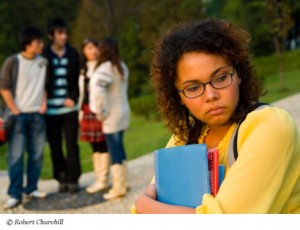Published: January 20, 2010
Recent research indicates that school burnout among adolescents is shared with parental work burnout. Children of parents suffering from burnout are more likely than others to experience school burnout. Funding from the Academy of Finland has supported the first ever scientific study into the associations between adolescents’ and parents’ burnout. School burnout is a chronic school-related stress syndrome that is manifested in fatigue, experiences of cynicism about school and a sense of inadequacy as a student.
For this study estimates of school burnout were obtained from 515 ninth-grade schoolchildren aged 15. Estimates of work burnout were obtained from 595 parents of these adolescents. The results showed that experiences of burnout were shared in families. “Experiences of burnout were shared most particularly between adolescents and parents of the same gender, i.e. between daughters and mothers and between sons and fathers. [continue reading…]
Published: January 18, 2010
A new study from Perth’s Telethon Institute for Child Health Research has shown that children who are breastfed for longer than six months have a lower risk of mental health problems as they enter their teen years.
The research, led by Associate Professor Wendy Oddy, will be published in the next edition of The Journal of Pediatrics.
Dr Oddy said breastfeeding for a longer duration appears to have significant benefits for the mental health of the child into adolescence.
“There has been much evidence about the benefits of early breastfeeding, but the importance of this study is that it shows continued benefits from extended feeding,” Dr Oddy said.
[continue reading…]
Published: January 14, 2010
Boys Born to Adolescent Dads Are More Likely to Become Young Fathers
A new study finds that males who are born to adolescent fathers are more likely than males born to older fathers to perpetuate the trend by also becoming fathers while in their adolescence. [continue reading…]
Published: January 14, 2010
 A disturbing report by the Substance Abuse and Mental Health Services Administration (SAMHSA) indicates that, in the past year, one quarter (26.7 percent) of adolescent girls participated in a serious fight at school or work, group-against-group fight, or an attack on others with the intent to inflict serious harm.
A disturbing report by the Substance Abuse and Mental Health Services Administration (SAMHSA) indicates that, in the past year, one quarter (26.7 percent) of adolescent girls participated in a serious fight at school or work, group-against-group fight, or an attack on others with the intent to inflict serious harm.
“These findings are alarming,” said SAMHSA Administrator Pamela S. Hyde, J.D. “We need to do a better job reaching girls at risk and teaching them how to resolve problems without resorting to violence [continue reading…]

